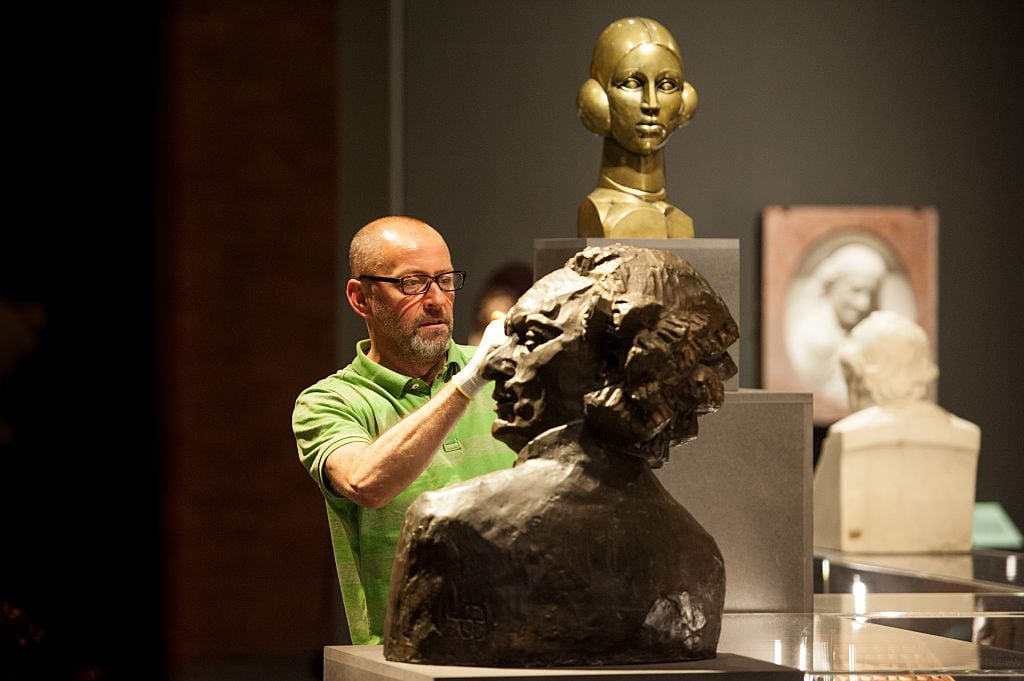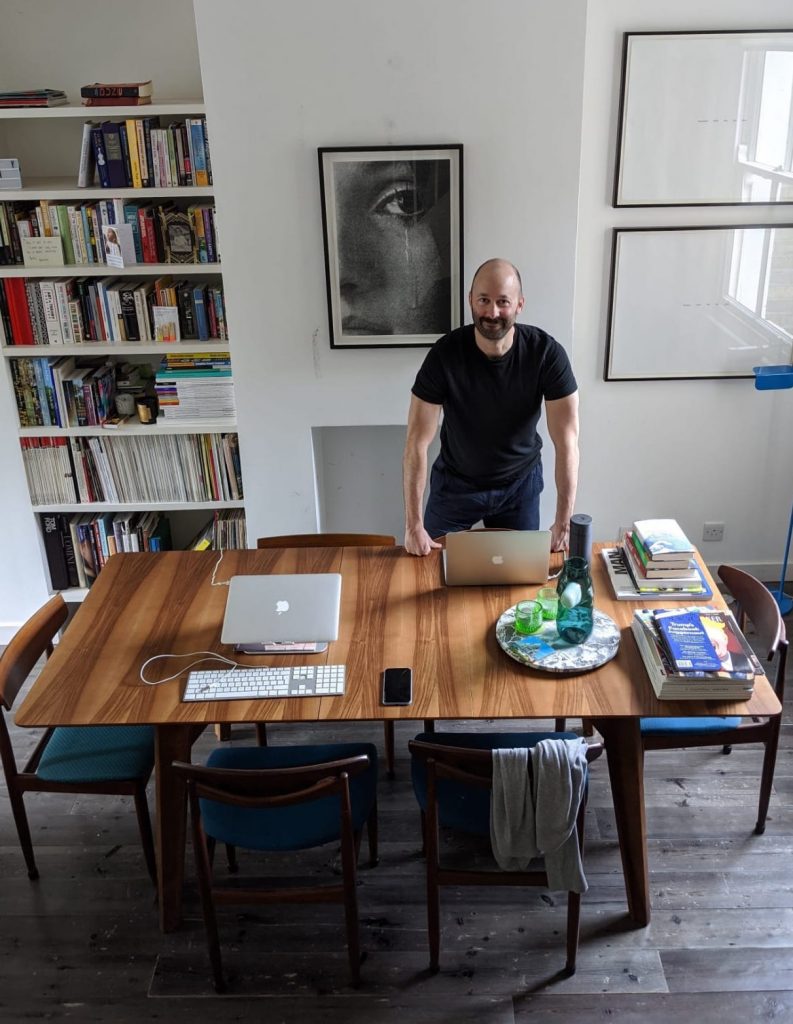People
‘I Will Look Back on This Moment as Time Interrupted’: 7 Arts Workers on How the Pandemic Rearranged Their Lives
We asked dealers, curators, and writers to reflect on the difficulties and opportunities of the past year.

We asked dealers, curators, and writers to reflect on the difficulties and opportunities of the past year.

Artnet News

In one way or another, the pandemic has touched all of us, scrambling our routines, inaugurating anxieties, and forcing us to reconsider priorities and concerns.
In looking back on the past year, we asked a handful of curators, writers, dealers, and others how the pandemic has altered their lives—for better and for worse.
A year ago, I started my own digital consulting company after over a decade of working within institutions including the Guggenheim and the Jewish Museum in New York. Only a few months in, the pandemic hit.
As museums and galleries worldwide went into crisis mode, trying to navigate the challenge of moving all their activities online, I worked with them on developing strategies for engagement. I feel incredibly lucky to be able to do this work right now, and try to pay it forward by aligning myself with clients and organizations I believe in.
Today, my little world exists between my laptop and a yoga mat, either inside my apartment in New York, or my parents’ home in DC. As much as I wouldn’t mind jumping on the next plane and returning to pre-pandemic times, this past year has taught me that the only things I truly need in my life are my family, my health, and—ok—the internet.

Will Fenstermaker. Portrait on paper by Phong H. Bui.
I was fortunate that the last exhibition I saw before New York City locked down was Alfred Jarry at the Morgan Library, because since last year, I’ve returned to my first love, literature. With all this free time, I’ve reread old favorites, like Clarice Lispector and Curzio Malaparte, and been turned on to the marvelous works of José Eduardo Agualusa, Scholastique Mukasonga, and basically, Archipelago Books’ entire catalogue. These writers have sustained my access to world culture while I shelter in place in Brooklyn. And besides a few reviews of exciting shows I couldn’t resist, I’ve occupied most of my writing time interviewing artists quarantined around the world and covering books on art and philosophy.
As things open up again, I suspect I’ll review fewer New York exhibitions than I used to. Before, there was some tacit sense that art’s epicenter began and ended in the city. Everybody knew that this wasn’t true, but the economic structure perpetuated the charade. A silver lining to this year of pestilence and isolation is that no one can force us to go back.
This strange year culminated for me when the Brooklyn Rail invited me to be its March guest critic. Since we’re all so evidently living through a time of immense social and political change, I wanted to get at the heart of what it means to declare a new world. I commissioned a section on manifestos (and I’m pleased that a friend and former colleague, Artnet News’s managing editor, Pac Pobric, contributed a piece on Robespierre and the storming of the US Capitol). Assembling this section was an early step toward a book I’d like to write.
What I have wanted most in this time was to spend time with my loved ones. I’m in a privileged situation because I have dual citizenship, so I’m able to go to France and back. My family are in Africa, in Scandinavia, and in France. During normal times, because you’re running from one fair to another, you’re too busy to visit.
At the same time, even though the word “busy” has become so overused, I’ve never been so busy. You’re not in a meeting, you’re not traveling, so people expect you to pick up the phone. It’s a different busy.
But the gallery can be open, and it has been a good place to be confined. We have space, we have art, and we can even invite people over in small gatherings. It’s wonderful to come to a place every morning at 10 and leave at six! I do it religiously now. It gives some order and structure.
In the future, when, we imagine, “things will have returned to normal” (will they?), I will look back on this moment as a time interrupted. A time when exhibitions were canceled and deferred and planned without the certainty that they would occur, and normal exhibition protocols broke down; when one never saw colleagues or students except as minute remote beings confined to two-inch boxes on a laptop screen.
A time without art (virtual “galleries” only work for sellers and shoppers, not viewers), of museums shuttered and workers laid off and furloughed with the shrugging assent of trustees entrusted with the oversight of these institutions.
A time of extraordinary social unrest: BLM protesters gassed and flash-banged in front of the White House, Proud Boys stabbings at my bus stop, the invasion of the Capitol by white supremacists, a Guston Klan scene with gibbet and noose come to life outside my office.
A time when one rarely left one’s apartment for fear of “catching it,” as the numbers of the afflicted and dead rose and rose.
A time of people masked and being masked, of “keeping one’s distance,” of having not shaken hands with anyone for over a year.

Richard Scott, Founder and CEO of PR consultancy Scott & Co, at his home dining table-turned-office.
The personal existential reflection that came when the pandemic hit, and the giant societal reckonings on social justice and the environment that followed, acted as catalysts for a number of big and, as it would turn out, brilliant conversations with clients, staff, media and friends. This led to an inspiring and ongoing company discussion and action plan on equality, diversity and inclusion, as well as a number of successful client projects that promote incredible but underrepresented voices.
In a non-executive capacity it has meant being able to advocate for an industry-specific response to climate change as a founding committee member of the Gallery Climate Coalition, and giving time and support to Studio Voltaire as a trustee during their all-important year of capital redevelopment. Meanwhile, I managed to sustain an acute muscle strain from sitting down all day at home on what I now know are pretty uncomfortable dining chairs!
The pandemic accelerated our team’s culture into the future—our five-year plan is happening now, all at once, in 2021. We’ve always been interested in the potential of the art-fair platform, but now these long-term visions and goals are being explored much sooner, and quicker, than we ever thought pre-2020.
How far into media and content production can we go? What role can we play in the city’s public art sphere? Despite the change, and loss, of the last year, it is still an exciting time for the FNB Art Joburg team.
Our work life has been reduced to Zoom meetings due to travel restrictions, but I take solace in artworks that inspire hope in my office. Works by David Wojnarowicz and General Idea address the desperation and urgency of the AIDS epidemic during the ’80s. It is reassuring to know that this pandemic will be over at some point.